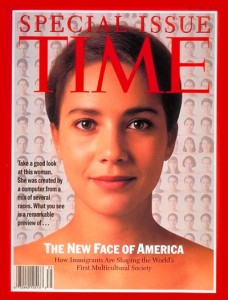I found the ‘thinking diversity’ table which we looked at in class last week really interesting. The category which I found most thought-provoking was the last one called ‘the inter-face.’ In our modern, technology entrenched society it is easy to understand how identities are forged with what we see around us. Our natural body is constantly engaging with technology. How often do you sit on the train, glance up and see that everyone is engaged with some type of device?
On her discussion of “Cyborgs and Barbie Dolls: Feminism, Popular Culture and the Post-human Body” Kim Toffoletti explores how the Barbie Doll can be used to represent the idea of the ‘post-human’ through her multiple identities. In relation to the third category of ‘thinking diversity’ which we examined in class, I believe it is possible look at how Barbie allows us to locate gender inequalities and hegemonic norms which sensationalise the pointing out of differences. The interface looks at identity not as a solid notion, but as an assemblage. In this respect, I think it is important to look at how gender ideologies are reproduced and reinstated through popular culture and identity politics. Another gender class I take looks at issues related between gender and health. We look at how hegemonic notions of gender creates many issues which compound how we think of the ‘healthy body’ and how it marginalises people from the health care system. Mainstream media, and even mainstream practices of medicine tend to exclude marginalised bodies (Trans, disabled, racialized) and thus perpetuates troubling hegemonic inequities. Given that all bodies are different and all identities are individualised, it is interesting to examine how ‘post-human’ allows us to look at a space beyond these politics of recognition.
